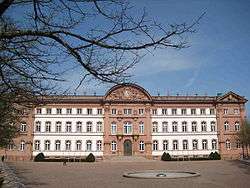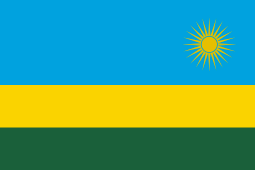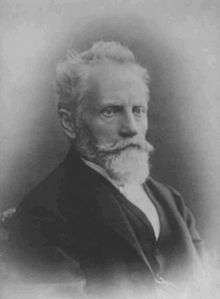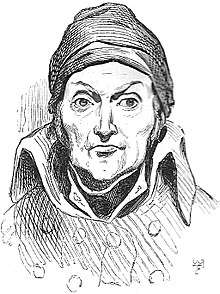Zweibrücken
| Zweibrücken | ||
|---|---|---|
 | ||
| ||
 Zweibrücken | ||
| Coordinates: 49°15′N 7°22′E / 49.250°N 7.367°ECoordinates: 49°15′N 7°22′E / 49.250°N 7.367°E | ||
| Country | Germany | |
| State | Rhineland-Palatinate | |
| District | Urban district | |
| Government | ||
| • Mayor | Kurt Pirmann (SPD) | |
| Area | ||
| • Total | 70.64 km2 (27.27 sq mi) | |
| Elevation | 300 m (1,000 ft) | |
| Population (2017-12-31)[1] | ||
| • Total | 34,270 | |
| • Density | 490/km2 (1,300/sq mi) | |
| Time zone | CET/CEST (UTC+1/+2) | |
| Postal codes | 66482 | |
| Dialling codes | 06332 | |
| Vehicle registration | ZW | |
| Website | www.zweibruecken.de | |
Zweibrücken (German pronunciation: [ˈt͡svaɪˌbʁʏkn̩], French: Deux-Ponts [døpɔ̃], Palatinate German: Zweebrigge [ˈd͡sʋeːbʁɪgə]) is a town in Rhineland-Palatinate, Germany, on the Schwarzbach river.
Name
The name Zweibrücken means 'two bridges'. Older forms of the name include Middle High German Zweinbrücken, Latin Geminus Pons and Bipontum, and French Deux-Ponts, all with the same meaning.[2]
History
The town was the capital of the former Imperial State of Palatinate-Zweibrücken owned by the House of Wittelsbach. The ducal castle is now occupied by the high court of the Palatinate (Oberlandesgericht).[2] There is a fine Gothic Protestant church, Alexander's church, founded in 1493 and rebuilt in 1955.
From the end of the 12th century, Zweibrücken was the seat of the County of Zweibrücken, the counts being descended from Henry I, youngest son of Simon I, Count of Saarbrücken (d. 1182). The line became extinct on the death of Count Eberhard II (1394), who in 1385 had sold half his territory to the Count Palatine of the Rhine, and held the other half as his feudal domain. Louis (d. 1489), son of Stephen, founded the line of the counts palatine of Zweibrücken (Palatinate-Zweibrücken).[2] In 1533, the count palatine converted Palatinate-Zweibrücken to the new Protestant faith. In 1559, a member of the line, Duke Wolfgang, founded the earliest grammar school in the town (Herzog-Wolfgang-Gymnasium), which lasted until 1987.
When Charles X Gustav, the son of John Casimir, Count Palatine of Kleeburg, succeeded his cousin, Queen Christina of Sweden, on the Swedish throne, Palatinate-Zweibrücken was in personal union with Sweden, a situation that lasted until 1718.
Starting in 1680, Louis XIV's Chambers of Reunion awarded Zweibruecken and other localities to France, but under the 1697 Treaty of Rijswijk, "The Duchy of Zweibruecken was restored to the King of Sweden, as Count Palatine of the Rhine."[3]
In 1731, Palatinate-Zweibrücken passed to the Palatinate-Birkenfeld-Zweibrücken branch of the counts palatine, from where it came under the sway of Bavaria in 1799. It was occupied by France in 1793 and on 4 November 1797, Zweibrücken became a canton centre in department of Mont Tonnerre. At the Peace of Lunéville in 1801, the French annexation of Zweibrücken was confirmed; on its reunion with Germany in 1814 the greater part of the territory was given to Bavaria, the remainder to Oldenburg and Kingdom of Prussia.[2] The town of Zweibrücken became part of the Palatine region of the Kingdom of Bavaria.
At the ducal printing office at Zweibrücken the fine series of the classical editions known as the Bipontine Editions was published (1779 sqq.).[2]
The last prominent social event before the First World War was the inauguration of the Rosengarten (rose garden) by Princess Hildegard of Bavaria in June 1914. As a consequence of the First World War, Zweibrücken was occupied by French troops between 1918 and 1930. In the course of the Kristallnacht in 1938, Zweibrücken's synagogue was destroyed. On the outbreak of the Second World War the town was evacuated in 1939-1940, as it lay in the ‘Red Zone’ on the fortified Siegfried Line. Shortly before the end of the war, on 14 March 1945, the town was nearly completely destroyed in an air raid by the Royal Canadian Air Force, with the loss of more than 200 lives. On 20 March, American ground troops reached Zweibrücken. The town became part of the new state of Rhineland-Palatinate after the war.
In 1993, the town underwent a major change. With the departure of the Americans, the military area became free, which corresponded altogether to a third of the entire urban area. Unemployment increased to approximately 21%, leading to a decrease in demand in the retail trade of approximately 25%.
Mayors and Lord Mayors
- 1895–1904 Wolff
- 1905–1905 Freudenberg
- 1905–1932 Roesinger
- 1932–1945 Karl Ernst Collofong (SDAP)
- 1945–1959 Ignaz Roth (1894-1972) (SPD)
- 1959–1969 Oskar Munzinger (1911-1983) (SPD)
- 1969–1979 Helmut Fichtner (SPD)
- 1980–1992 Werner von Blon (1929-2009) (SPD)
- 1993–1999 Hans Otto Streuber (born 1949) (SPD)
- 1999–2004 Jürgen Lambert (born 1936) (CDU)
- 2004–2012 Helmut Reichling (CDU)
- since 2012 Kurt Pirmann (born 1955) (SPD)
Economy
Weaving, brewing and the manufacture of machinery, chicory, cigars, malt, boots, furniture and soap were the chief industries before World War II. Nowadays Terex cranes and bulldozers and John Deere harvesting equipment are the chief industries.
The Hochschule Kaiserslautern , one of the largest universities in the Rhineland-Palatinate, with more than 6,000 students is also located in Zweibrücken.
Zweibrücken Air Base
On the outskirts of the town, Zweibrücken Air Base was for many years home to U.S. airmen and their families. Prior to being a USAFE base, the base was operated by the Royal Canadian Air Force. It was known as #3 Fighter Wing, part of #1 Canadian Air Division with headquarters in Metz, France. During the years 1953 to 1968, it was the home to 413, 427 and 434 Fighter Squadrons flying F-86 Sabre jets, and 440 Squadron, which flew the CF-100 Canuck, then the CF-104 Starfighter. The RF-4C was stationed at Zweibruecken AB from the 1970s to 1991 under the 38th Tactical Reconnaissance Squadron of the 26th Tactical Reconnaissance Wing. These were photo-reconnaissance aircraft with missions all over Europe and used in Desert Storm.
The Short C-23 Sherpa, a small prop-driven transport plane, also flew out of the base in the 1980s under the 10th Military Airlift Squadron, a tenant Military Airlift Command unit. The squadron's mission was to deliver high-priority aircraft parts to bases in USAFE to ensure a maximum number of aircraft were combat-ready. Today Zweibrücken Air Base has been transformed into the modern Zweibrücken Airport , an international airport with flights to Palma de Mallorca, Antalya, Gran Canaria, Teneriffe, Rhodos, Heraklion and Fuerteventura (TUIfly), Istanbul (Pegasus Airlines)
On the other side of the town was Kreuzberg Kaserne, home to various units of the United States Army. Only one combat unit was located there: Battery A, 2nd Battalion, 60th Air Defense Artillery, with its Headquarters and Headquarters Battery (HHB) at Ramstein Air Base. The 3d Battalion, 60th ADA was a subordinate unit of the 32nd Army Air Defense Command. Major tenants at Kreuzberg Kaserne were USAISEC-EUR (Information Systems Engineering Command - Europe) and the USA MATCOMEUR (Material Command, Europe), later renamed the US Army Material Management Agency, Europe.
Transportation
Zweibrücken is situated at the Landau-Rohrbach railway and offets hourly connections to Saarbrücken.
Climate
Climate in this area has mild differences between highs and lows, and there is adequate rainfall year-round. The Köppen Climate Classification subtype for this climate is "Cfb" (Marine West Coast Climate/Oceanic climate).[4]
| Climate data for Zweibrücken | |||||||||||||
|---|---|---|---|---|---|---|---|---|---|---|---|---|---|
| Month | Jan | Feb | Mar | Apr | May | Jun | Jul | Aug | Sep | Oct | Nov | Dec | Year |
| Average high °C (°F) | 3 (37) |
4 (39) |
9 (48) |
12 (53) |
17 (63) |
20 (68) |
22 (72) |
22 (72) |
19 (66) |
13 (56) |
7 (45) |
4 (39) |
13 (55) |
| Average low °C (°F) | −1 (31) |
−1 (30) |
2 (36) |
4 (40) |
8 (47) |
12 (53) |
14 (57) |
13 (56) |
11 (51) |
7 (45) |
3 (37) |
1 (33) |
6 (43) |
| Average precipitation days | 21 | 16 | 19 | 15 | 16 | 16 | 13 | 12 | 13 | 16 | 17 | 20 | 194 |
| Source: Weatherbase [5] | |||||||||||||
Twin towns




Famous inhabitants


- Jonas Erikson Sundahl (1678-1762), Swedish-born architect who designed Schloss Zweibrücken
- Georg Christian Crollius (1728–1790), historian and librarian
- Johan Ludvig Mansa (1740–1820), Danish gardener and castellan
- Friedrich Wilhelm Schultz (1804–1876), pharmacist and botanist
- Carl Heinrich Schultz (1805–1867), physician and botanist
- Philipp Ludwig von Seidel (1821–1896), mathematician and astronomer
- Eugene W. Hilgard (1833–1916), soil scientist, geologist and agronomists
- Hermann Dingler (1846–1935), botanist
- Gustav Aschaffenburg (1866–1944), psychiatrist
- Maximilian Schuler (1882–1972), engineer, mechanical engineer and physicist
- Emil Oberholzer (1883–1958), Swiss psychiatrist and psychoanalyst
- Johann Fortner (1884–1947), officer of the Armed Forces
- August Heinrich Bruinier (1897–1970), violinist
- Otto Bradfisch (1903–1994), economist, a lawyer and Obersturmbannführer and commander of the state police and the SD in Litzmannstadt (Łódź) and Potsdam
- Otto Carius (1922–2015), pharmacist,
- Peter Fleischmann (born 1937), film director
- Charlotte Lehmann (born 1938), concert singer and singing teacher
- Ron MacLean (born 1960), Canadian sportswriter
- Rainer Schönborn (born 1962), ice dancer
- Larry Mitchell (born 1967), ice hockey player
- Nico Zimmermann (born 1985), football player
- Christin Hussong (born 1994), javelin thrower
Personalities who have worked on site
- Hieronymus Bock (1498-1554), significant physician and botanist
- Pantaleon Candidus (1540-1608), reformed theologian, historian and author
- Nicolas Appert (1749-1841), confectioner and inventor
- Jakob Weis (1879-1948) prison pastor in Zweibrücken 1909-1921, divisional chaplain in World War I, an author, 1925-1940 study professor at the secondary school or at school, 1940-1948 Emeritus in Zweibrücken, there he also died
See also
Notes
- ↑ Statistisches Landesamt Rheinland-Pfalz "Bevölkerungsstand 2017 - Gemeindeebene" Check
|url=value (help). Statistisches Landesamt Rheinland-Pfalz (in German). 2018. - 1 2 3 4 5

- ↑ Crane Brinton, "France", in William L. Langer, ed., (1948), An Encyclopedia of World History, Rev. Edition, Boston: Houghton Mifflin, pp. 443-445.
- ↑ Climate Summary for Zweibrücken
- ↑ "Weatherbase.com". Weatherbase. 2013. Retrieved on July 6, 2013.
Further reading
- Ammerich, Hans, Zweibrücken. Die alte Herzogsstadt in Geschichte und Gegenwart, Zweibrücken 1983
- Bartz, Günther, Zweibrücken. Frühe Kunde – Herzogliche Zeiten – heute, Speyer 1960
- Lehmann, Johann Georg, Vollständige Geschichte des Herzogthums Zweibrücken und seiner Fürsten, der Stamm- und Voreltern des k. bayer. Hauses, Munich, 1867
- Molitor, Ludwig, Vollständige Geschichte der ehemals pfalz-bayerischen Residenzstadt Zweibrücken von ihren ältesten Zeiten bis zur Vereinigung des Herzogtums Zweibrücken mit der Bayerischen Krone, Zweibrücken 1884
External links
- (in German) Official website

- (in German) Information Portal about Zweibrücken
